

By: Bob Shepard
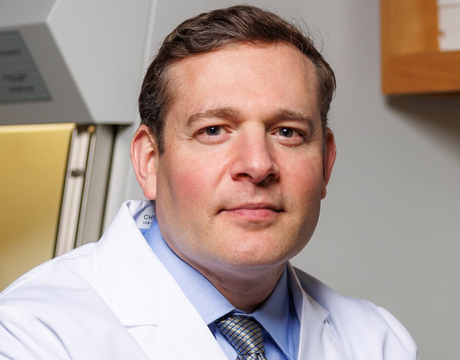 |
| Gregory Friedman, M.D. |
Brain tumors are the most common solid tumor in children, and aggressive types like glioblastoma have an extremely low survival rate: as low as 10 percent five years after diagnosis. Even tumors successfully treated by surgery, radiation and/or chemotherapy have a high recurrence rate.
“This is the first study utilizing delivery of a viral immunotherapy directly into the tumor of children with brain tumors, and the results indicate the engineered herpes virus can be delivered safely into tumors located in all areas of the cerebrum in children,” said Gregory Friedman, M.D., professor in the Department of Pediatrics at UAB, research scientist at the UAB O’Neal Comprehensive Cancer Center, and director of developmental therapeutics for the Alabama Center for Childhood Cancer and Blood Disorders at UAB and Children’s of Alabama. “The key findings thus far are that the approach is safe and well tolerable, and the preliminary evidence of efficacy is promising.”
In the Phase 1 clinical trial of 12 patients between 7 and 18 years of age, the investigators employed a modified virus known as G207, derived from the herpes virus responsible for cold sores. The virus is genetically altered so that it infects only tumor cells. When injected into a malignant brain tumor via a catheter, the virus enters the tumor cells and replicates. This kills the cell and releases the virus’s progeny to hunt out other tumor cells. Additionally, the virus induces a strong immune response by the body’s immune system, which can attack the tumor. The trial tested G207 alone and then combined with a single low-dose of radiation designed to increase virus replication and spread throughout the tumor.
G207 is the product of more than 30 years of research. James Markert, M.D., MPH, chair of the UAB Department of Neurosurgery, was part of the team at Massachusetts General Hospital in the early 1990’s that first developed the concept of using oncolytic herpes viruses. He worked on the parent virus for G207 and conducted the first clinical study of G207 at UAB. Today the use of viral therapies is under investigation for nearly every type of cancer.
Gregory Friedman, M.D.A second-generation virus, called M032, has been developed by Markert and collaborators Yancey Gillespie, Ph.D., professor of neurosurgery, and Richard Whitley, M.D., Distinguished Professor of pediatric infectious disease, and is in clinical trials at UAB in adults with glioblastoma. UAB investigator Renee Chambers, DVM, M.D., is using M032 in a study of brain tumors in dogs, which can develop tumors very similar to those in humans.
In the current trial, 11 of the 12 patients demonstrated a treatment response. The overall survival rate was more than double the typical survival rate for children with high-grade glioma. Some 36 percent of the patients thus far have survived longer than 18 months, surpassing the medial overall survival for newly diagnosed patients with high-grade glioma.
Friedman’s team reports that G207 alone or in combination with radiation therapy was well tolerated, with no serious adverse side effects attributed to the treatment.
“There are still more studies needed; but thus far, viral immunotherapy with several different viruses, including herpes virus, has shown promise in treating high-grade brain tumors in both adults and children,” Friedman said. “We also have an ongoing clinical trial to test the safety of G207 when delivered into the cerebellum, an area of the brain that has not been tested before in adults or children but is the most common location for pediatric tumors to arise.”
Friedman says the next steps are to determine the ideal timing to treat patients and what therapies can be used with viral immunotherapy to maximize the anti-tumor immune response. Based on the encouraging Phase 1 trial results, he and his team are working with the Pediatric Brain Tumor Consortium to develop a multi-institutional Phase 2 trial of G207 for progressive pediatric high-grade glioma, which they hope to initiate later this year.
The study was supported by the United States Food and Drug Administration Orphan Products Clinical Trials Grants Program, Cannonball Kids’ Cancer Foundation, the Rally Foundation for Childhood Cancer Research, Hyundai Hope on Wheels, St. Baldrick’s Foundation, and the Kaul Pediatric Research Institute. G207 was provided by Treovir, LLC.
Friedman is supported, in part, by contracts between UAB and Eli Lilly and Co. and Pfizer. Markert and Whitley have financial interests in Treovir, LLC, which provided G207 for the trial. They were not involved in any aspect of the conduct or data analysis of the study.
By: Matt Windsor
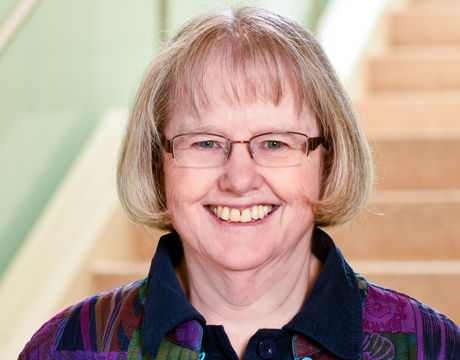 |
| Wendy Landier, Ph.D. |
Survivors of childhood cancers are at increased risk of developing subsequent HPV-related cancers, in part because they can experience prolonged immunosuppression during and after active treatment. According to one 2013 study, female survivors of pediatric and young adult cancers have a 40 percent higher risk of subsequent HPV-related cancers compared with females in the general United States population, while male cancer survivors have a 150 percent higher risk.
But the uptake of HPV vaccines among young cancer survivors is lower than that of the general population. According to previous research by the same investigators at UAB and Emory, the strongest predictor of HPV vaccine non-initiation in cancer survivors was lack of health care provider recommendation for the vaccine. Some vaccines do not generate as strong an immune response in individuals who have received cancer treatment, which could be one reason providers have been hesitant to strongly recommend HPV vaccination to patients who are cancer survivors. Another potential obstacle is the fact that HPV vaccination is not currently part of routine oncologic follow-up care.
The new study is the first phase 2 clinical trial to evaluate the safety and immunogenicity of the HPV vaccine in young cancer survivors. It enrolled 436 participants ages 9-26 who were between one and five years post-cancer therapy. The study found that antibody responses against HPV types 16 and 18 — the two primary causes of HPV-related subsequent cancers — were noninferior to comparable groups in the general population. The safety profile in participants was similar to the general population as well. The most common cancer represented among participants was leukemia (47 percent), and 14 percent of participants had undergone hematopoietic cell transplantation.
“These findings support incorporation of the HPV vaccine into routine oncologic follow-up care for all young cancer survivors,” said Wendy Landier, Ph.D., co-principal investigator of the study and first author of the Lancet Child & Adolescent Health article, who is a professor in the Division of Pediatric Hematology/Oncology in the UAB Marnix E. Heersink School of Medicine and the UAB School of Nursing. Landier is also deputy director of the UAB Institute for Cancer Outcomes and Survivorship.
“When a young cancer survivor faces the diagnosis of a subsequent cancer, this is devastating not only for the survivor, but also for their family and for the health care providers who worked so hard to treat the primary cancer,” Landier said. “The ability to prevent subsequent HPV-related cancers is now within our grasp. Routine administration of this safe and effective cancer-prevention vaccine to childhood cancer survivors should substantially reduce their risk of developing HPV-related subsequent cancers.”
Landier and article senior author James Klosky, Ph.D., of Emory University, who is also co-principal investigator for the clinical trial, are now at work on a National Cancer Institute-funded clinical trial of an intervention aimed at improving HPV vaccine uptake in childhood cancer survivors by focusing on pediatric oncology health care providers.
Landier and Klosky became interested in HPV vaccinations among young cancer survivors soon after the first quadrivalent HPV vaccine was approved by the U.S. Food and Drug Administration in 2006. “We both worked clinically with childhood cancer survivors, and we were excited about the possibility of a vaccine that could prevent HPV-related cancers in this population,” Landier said. “We also wondered whether these young cancer survivors would be able to mount an immunological response to the vaccine similar to that of their healthy peers in the general population. As we worked on our grant proposal, we became very aware of the low uptake of the HPV vaccine in the general population, compared to that of other vaccines, and we wanted to understand whether low HPV vaccination rates would also be a problem in young cancer survivors.”
“The ability to prevent subsequent HPV-related cancers is now within our grasp,” said Wendy Landier, Ph.D.
The researchers received funding support to examine these questions from the National Cancer Institute, which led to the initiation of this clinical trial in 2012. The trial enrolled participants through June 2018, and the final follow-up occurred in July 2020. A noninferiority trial is designed to determine if serum antibody levels in trial participants are similar to or better than the antibody levels found in a comparable efficacy trial — in this case, the efficacy trials used for HPV vaccine licensure. Participants enrolled through March 1, 2016, received the quadrivalent, or HPV4, vaccine, which protects against four types of HPV. Subsequent participants received the nonavalent, or HPV9, vaccine, which protects against nine HPV types. Noninferiority criteria were met for each age/sex subgroup in the trial except against HPV type 18 in older females (ages 16-26) receiving the HPV9 vaccine. (The HPV4 vaccine is no longer used in the United States, but it is still authorized for use in some other countries, Landier says.)
One or more adverse effects were reported by 55 percent of participants: 51 percent of those receiving the HPV4 vaccine and 59 percent of those receiving HPV9. The most common adverse effect was injection site pain, although the proportion of cancer survivors reporting injection-related adverse effects (pain, swelling, redness) was significantly lower than the general population. The proportion of cancer survivors reporting nausea and fatigue was significantly higher than the general population.
“We used a noninferiority design because an efficacy trial was not feasible in the cancer survivor population due to the large numbers of participants — thousands — required for efficacy trials, and the fact that half of our targeted population consisted of children and younger adolescents, in whom an efficacy trial would not have been feasible,” Landier said. “We also had the advantage that immunogenicity studies had already been conducted in the general population for all the age/sex groups that we were targeting among the cancer survivors. This allowed us to make direct comparisons to each age/sex subgroup within the general population. This is important because immunogenicity to the HPV vaccine is known to vary by age and sex, with younger patients and males producing higher antibody titers than older patients and females, respectively.”
In addition to Landier and Klosky, the authors of “Immunogenicity and safety of the human papillomavirus vaccine in young survivors of cancer in the USA: a single-arm, open-label, phase 2 noninferiority trial” include Smita Bhatia, M.D., Jocelyn M. York, Harrison M. Henneberg, Purnima Singh, Ph.D., and Kandice Adams, R.N., of UAB; F. Lennie Wong, Ph.D., and Saro H. Armenian, D.O., of City of Hope; Jessica S. Flynn, Leslie L. Robison, Ph.D., and Melissa M. Hudson, M.D., of St. Jude Children’s Research Hospital; Karen Wasilewski-Masker, M.D., and Brooke Cherven, Ph.D., of Emory University; Rama Jasty-Rao, M.D., and Marcia Leonard of the University of Michigan; James A. Connelly, M.D., of Vanderbilt University; and Anna R. Giuliano, Ph.D., of Moffitt Cancer Center. The work was supported by National Cancer Institute grant R01CA166559, the Investigator-Initiated Studies Program of Merck Sharp & Dohme Corp., and the American Lebanese Syrian Associated Charities.
By: Bob Shepard
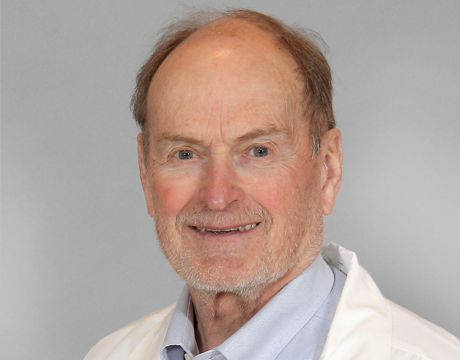 |
| Alan Percy, M.D. |
To qualify as a Center Of Excellence, clinics had to demonstrate that they met four requirements established by IRSF’s Medical Advisory Board:
UAB’s Civitan Rett Syndrome Clinic, part of the Sparks-Civitan clinics, is led by Alan Percy, M.D., professor of pediatric neurology. Percy is considered one of the world’s leading experts on this unique developmental disorder that affects one in every 10,000 female births worldwide. When at Baylor College of Medicine in the 1980s, Percy was one of the first physicians in the United States to identify the condition.
“We are honored with this recognition from IRSF and pleased to be a part of their clinical network,” Percy said. “We are committed to maintaining the high standards of care that define a Center of Excellence.”
Currently, many families must travel for an entire day to visit a physician who is knowledgeable about Rett syndrome. UAB’s continued recognition as a leader in Rett syndrome care will make it the go-to clinic for local families as well as help to educate other physicians about Rett syndrome care.
“This network is part of IRSF’s goal to get families the expert Rett clinical care that their loved ones need to thrive,” said IRSF CEO Melissa Kennedy. “Our goal is that the vast majority of families living with Rett syndrome have access to a Rett syndrome expert by 2024.”
There are no approved treatments for Rett syndrome, and the network’s clinical trial research will play an essential role in ensuring therapeutic development progresses as quickly as possible. Rett syndrome causes severe cognitive impairment, including loss of communication and motor skills, reduced growth, and unusual breathing patterns.
“The infrastructure created by our Center of Excellence partners allows us to aggressively engage in clinical research,” said IRSF CSO Dominique Pichard, M.D. “This is the only way to make treatment options and curative therapies a reality for all families living with Rett syndrome.”
Survival into adulthood is now expected barring other illnesses or serious physical complications. Girls and women with Rett syndrome can be expected to demonstrate a full range of emotions and enjoy satisfying social, recreational and educational experiences at home and in the community.
By: Hannah Echols
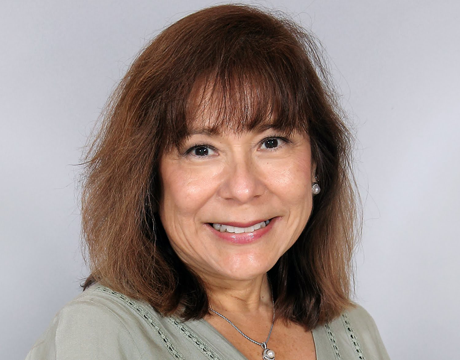 |
| Myriam Peralta-Carcelen, M.D. |
The HEALthy Brain and Child Development (HBCD) Study will establish a large cohort of pregnant women and follow them and their children for at least 10 years. Findings from this cohort will provide a template of normative neurodevelopment to assess how prenatal and perinatal exposures to substances and environments may alter developmental trajectories. This research infrastructure can be leveraged for urgent health needs, such as the current impact of the COVID-19 pandemic on development, or future health and environmental crises.
This longitudinal study will collect data on pregnancy and fetal development; infant and early childhood structural and functional brain imaging; anthropometrics; medical history; family history; bio specimens; and social, emotional and cognitive development. Knowledge gained from this research will help identify factors that confer risk or resilience for known developmental effects of prenatal and postnatal exposure to certain drugs and environmental exposures, including risk for future substance use, mental disorders, and other behavioral and developmental problems.
“The early years are a period of rapid brain growth when environmental exposures can have a significant impact,” said Myriam Peralta-Carcelen, M.D., professor of pediatrics at UAB and Children’s of Alabama and director of the UAB Newborn Follow-Up program. “This study is key for understanding the neurodevelopment of children in the state of Alabama, and across the country, so we can intervene early and optimize the outcome for mothers and their children.”
“We are focused on making participation as beneficial as possible for the mother and child,” said Lea Yerby, Ph.D., associate professor in the UA Department of Community Medicine and Population Health and the Institute for Rural Health Research at the UA College of Community Health Sciences. “Real-life experiences of rural moms and infants are often overlooked and not represented in research, but this project gives the opportunity to learn how the adversities and resilience of rural communities impact children long-term.”
UAB will recruit participants through the Comprehensive Addiction in Pregnancy Program, led by Peralta-Carcelen, principal investigator; Yerby, UA study lead; and co-investigators Brian Casey, M.D., director of the UAB Division of Maternal-Fetal Medicine; Cassandra Newsom, Ph.D., director of the Civitan Autism and Neurodevelopment Research Core; Namasivayam Ambalavanan, M.D., director of the TReNDD program; and team member Suzanne Muir, the Obstetrics Complication Clinic, Jefferson and Blount County departments of Health; and a variety of affiliated neighborhood health centers. Newsom will supervise the assessment of infant neurodevelopment across sites. Ambalavanan will oversee the collection of a wide range of biospecimens from mother and child.
UA will rely on its University Medical Center locations in Tuscaloosa County and rural health care clinics in surrounding counties for recruitment, which serve the state’s historically disenfranchised communities in the Black Belt. The project is one of the strategic themes of the Alabama Life Research Institute, led by co-investigators Sharlene Newman, Ph.D., and will use the new MRI facility coming to UA. Caitlin Hudac, Ph.D., a developmental cognitive neuroscience and co-investigator, will direct the collection of infant EEG data, while Holly Horan, Ph.D., co-investigator and biocultural medical anthropologist, is developing a health navigator program for new mothers. In addition, three faculty physicians from UA are critical parts of the project. They include John McDonald, M.D., associate professor and chair of obstetrics and gynecology; Catherine Lavendar, M.D., associate professor and director of the Family Medicine OB Fellowship; and Brian Gannon, M.D., associate professor and director of the Pediatrics Clinic.
This award is part of the Phase II HBCD Study, in which a fully integrated, collaborative infrastructure will support the collection of a large dataset that will enable researchers to analyze brain development in opioid-exposed and non-drug-exposed infants and children across a variety of regions and demographics.
HBCD is funded by 10 institutes and offices at the National Institutes of Health, and the Helping to End Addiction Long-termSM Initiative, or NIH HEAL Initiative, and is led by the National Institute on Drug Abuse.
By: Dylan Baggiano
 |
| Gregory Friedman, M.D. |
In a phase 1 trial, Friedman and colleagues successfully initiated an immune response by injecting HSV-1 G207, a modified form of a cold-sore virus, into 12 patients. When injected into malignant brain tumors, the virus selectively entered tumor cells and replicated. This killed the cells and released the virus’s progeny to hunt out other tumor cells. Importantly, the virus stimulated immune cells to travel to the tumor, creating a favorable environment for the immune system to attack the tumor. The results were encouraging; 11 of the 12 patients responded to the therapy, and more than half lived greater than 12 months with several long-term survivors. A first-in-human phase 1 trial of G207 is ongoing to test the safety and effectiveness of it in recurrent, malignant pediatric cerebellar tumors such as medulloblastoma, the most common malignant brain tumor in children.
Supporting Friedman’s work since 2013, Rally says The New England Journal of Medicine’s feature of his phase 1 trial provided the foundation with scientific evidence to encourage its supporters to provide bridge funding to expedite the research to phase II, in which he will test various therapy combinations with G207 to improve the anti-tumor immune response.
“Rally’s continuous support has been critical and has made our research for improved, targeted therapies for pediatric brain tumors possible,” Friedman said. “My hope is that this work will allow these children to live longer, happier lives.”
The Rally Foundation’s Bridge to a Cure, a special one-day fundraiser, engaged many of Rally’s brain tumor families and supporters to donate $100,000 to advance Dr. Friedman’s new phase of research.
By: Emma Shepard
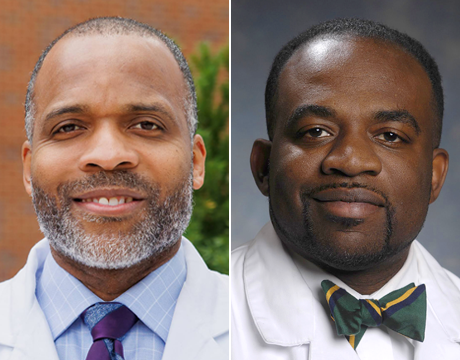 |
| Colin Martin, M.D., FACS and Brian Sims, M.D., Ph.D. |
Martin and Sims will serve as the co-principal investigators on the project, “The Therapeutic Potential of Pasteurized Human Donor Breast Milk Exosomes.” The two-year grant totals more than $400,000.
Martin and Sims are proposing a potential treatment to a devastating disease known as necrotizing enterocolitis (NEC). NEC is the leading cause of intestinal mortality in newborns and is characterized by intestinal epithelial cell injury or death and systemic inflammation.
In higher stages of NEC, infants have a poor prognosis and outcome. Unfortunately, there is no present therapy for these at-risk infants that targets systemic inflammation and oxidative stress injury in the gut and brain.
Martin and Sims believe that the answer to NEC might be found on a molecular level in breast milk. In fact, according to UNICEF research, formula-fed infants were six to 10 times more likely to develop NEC than those who received breast milk.
According to Martin and Sims, early breast milk administration is protective in neonates and promotes immune development in the gut. They have found that a component of breast milk, human breast milk-derived exosomes (HBMDE), is directly responsible for infants’ protection against intestinal epithelial cell death, thus preventing NEC.
Exosomes are small, naturally occurring nanovesicles that facilitate cellular communication. Exosomes are now being viewed as potential therapeutic agents in multiple organ systems.
Although preliminary results are promising, not all premature infants have access to the therapeutic benefit of their own mother’s breast milk. These mothers may turn to breast milk banks, but donor milk has been pasteurized to be pathogen-free.
Recent evidence suggest that exosomes are present in pasteurized donor milk, but it is not known if they have the same therapeutic benefit and immune profile of non-pasteurized fresh human milk exosomes.
This is where Martin and Sims come in. Using the R21 funding, they will study the immunogenic and therapeutic properties of HBMDE, to answer the question of pasteurized vs. non-pasteurized milk and its ability to prepare infants to fight NEC.
Sims is pleased to kick off the research.
“Dr. Martin and I spend many nights dealing with the devastating effects of necrotizing enterocolitis on premature infants,” said Sims. “Understanding this process could give us a better understanding into protective pathways. We will also determine which maternal factors are important in this process. We are very excited about the potential impact of this work.”
Martin looks forward to the researches potential impact on patients.
“NEC is a very debilitating disease,” said Martin. “But, this research not only gives providers hope, it also gives our patients hope in preventing and treating this disease in the future.”
By: Alicia Rohan
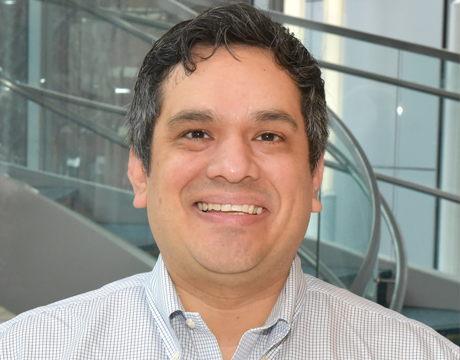 |
| Michael A. Lopez, M.D., Ph.D. |
Lopez, who is an assistant professor in the Division of Pediatric Neurology in the University of Alabama at Birmingham’s Department of Pediatrics, received the Mentored Clinical Scientist Research Career Development Award.
The grant is designed to provide five years of protected research time, training and mentorship to focus on a specific area.
“This grant will provide scientific training and career mentoring to for me to establish myself as an independent clinician-scientist investigator,” Lopez said. “The specific research molecularly defines the relationship between an important TGF-beta-regulated transcription factor, Smad8, and muscle-enriched microRNAs. The goal is to identify aberrant pathways that can be modulated to mitigate DMD pathophysiology.”
The award will also invest in his laboratory’s overall research interest in DMD and advance understanding of skeletal muscle function in health and disease.
Peter King, M.D., professor and vice chair in the Department of Neurology, and Matthew Alexander, Ph.D., assistant professor in the Division of Pediatric Neurology, will serve as his mentors on this grant (No. 1K08NS120812).